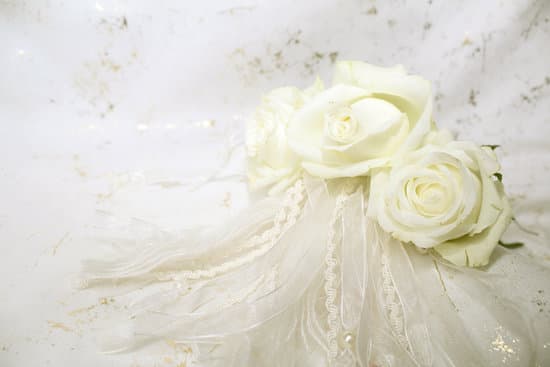Are you wondering, “How long does a Catholic wedding take?” In this article, we will explore the significance of a Catholic wedding ceremony and provide an overview of the entire process. From the preparation leading up to the wedding day to the actual ceremony and post-wedding customs, we will delve into every aspect to give you a complete understanding of what to expect from a Catholic wedding.
A Catholic wedding is a sacred and meaningful event that holds great significance for both the couple getting married and the church. The process involves various steps and requirements, including marriage preparation courses and meetings with the priest, all leading up to the beautiful and timeless ceremony.
In this article, we will discuss in detail the different parts of a Catholic wedding ceremony, such as the processional, exchange of vows, nuptial blessing, music and readings, post-ceremony customs, as well as exploring the importance of tradition within a Catholic wedding. Whether you’re planning your own Catholic wedding or simply interested in learning more about this rich tradition, we invite you to join us on this journey through one of life’s most significant milestones.
Preparing for the Wedding
When preparing for a Catholic wedding, there are several necessary steps and requirements that couples must fulfill before their big day. These steps are put in place to ensure that both individuals fully understand the sacrament of marriage and are prepared for the commitment they are about to make.
One of the first requirements is to schedule a meeting with the priest who will be officiating the wedding. During this meeting, the couple will discuss their desire to get married in the church and begin the process of marriage preparation.
Participating in a marriage preparation course is often a requirement for couples seeking to have a Catholic wedding. These courses provide valuable insight into the meaning of marriage as viewed through the lens of faith, as well as practical advice on communication, conflict resolution, and other important aspects of married life.
The length and format of these courses may vary depending on the church and location, but they are designed to help couples lay a strong foundation for their married life together.
In addition to attending marriage preparation courses, couples must also meet with the priest multiple times before their wedding day. These meetings serve as an opportunity for the couple to discuss their relationship, faith, and intentions for marriage with the priest. It also allows the priest to get to know the couple better and provide them with personalized guidance and support as they prepare for this sacred milestone in their lives.
The Ceremony
A Catholic wedding ceremony is a sacred and meaningful event that holds great significance for those who participate in it. The ceremony itself is a beautiful and intricate process that involves several key components, each of which contributes to the overall beauty and sanctity of the occasion. In this section, we will delve into the various parts of a Catholic wedding ceremony, including the processional, the exchange of vows, and the nuptial blessing.
The processional marks the beginning of a Catholic wedding ceremony and is a time-honored tradition that symbolizes the entrance of the wedding party into the sacred space where the marriage will take place. This procession typically includes the entrance of the priest, followed by the arrival of the groomsmen, bridesmaids, flower girls, ring bearers, and finally, the bride herself.
Each member of the wedding party makes their way down the aisle to a specific piece of music that holds personal significance for them.
Following the procession, one of the most important aspects of a Catholic wedding ceremony is the exchange of vows. This solemn and heartfelt moment is when both partners publicly declare their commitment to one another before God and their loved ones.
The vows are typically recited in unison or repeated after the officiating priest, with each partner promising to love, honor, and cherish their spouse for all eternity. The exchange of rings often accompanies this portion of the ceremony as a tangible symbol of the couple’s love and unity.
After exchanging vows, couples typically receive a nuptial blessing from the priest. This special blessing invokes God’s grace upon them as they begin their married life together. It serves as a powerful reminder of God’s presence in their union and provides an opportunity for friends and family members to offer their prayers and support to the newlyweds as they embark on this new chapter in their lives.
Length of a Catholic Wedding
A Catholic wedding is a sacred and beautiful ceremony that holds great significance for couples seeking to unite in marriage within the Catholic Church. The length of a Catholic wedding can vary based on a multitude of factors, including the specific traditions and customs observed by the couple, the readings and music chosen for the ceremony, and any additional rituals or customs that may be incorporated.
Understanding the typical duration of a Catholic wedding can help couples and their loved ones plan accordingly, ensuring that they can fully participate in and appreciate this special event.
Typical Duration
On average, a traditional Catholic wedding ceremony usually lasts between 30 minutes to an hour. However, it’s essential to note that this timeframe can fluctuate based on individual circumstances.
For example, if the couple opts to include certain rituals or customs within the ceremony, such as the lighting of the unity candle or presenting gifts to the Virgin Mary, this can extend the duration of the wedding. Additionally, other elements such as musical interludes or readings from scripture may also impact how long a Catholic wedding takes.
Variations Based on Traditions and Customs
The length of a Catholic wedding can also be influenced by specific cultural or regional traditions embraced by the couple. For instance, certain ethnic customs may involve intricate ceremonial practices or symbolic gestures that could add extra time to the overall duration of the wedding. Whether it’s incorporating traditional attire, performing customary dances, or observing unique religious rituals, these variations in traditions and customs can contribute to differences in how long a Catholic wedding takes.
Fulfilling Experience
Regardless of its duration, a Catholic wedding is intended to be a deeply meaningful and fulfilling experience for both the couple getting married and their guests. The timeless nature of this sacred ceremony offers an opportunity for loved ones to witness and celebrate the union of two individuals in love. Ultimately, regardless of how long a Catholic wedding takes, it is a joyous occasion filled with blessings from God and surrounded by cherished traditions that honor faith, love, and commitment.
Importance of Tradition
Traditions and rituals play a significant role in Catholic weddings, adding depth and meaning to the ceremony. These customs have been passed down through generations, symbolizing unity, love, and the couple’s commitment to their faith. One of the most iconic traditions in a Catholic wedding is the lighting of the unity candle.
This ritual involves the bride and groom each holding a lit candle and using them to ignite a larger, central candle. This act represents the merging of two lives into one unified partnership.
Another important tradition within a Catholic wedding is the presentation of gifts to the Virgin Mary. Couples often offer flowers or candles at a shrine dedicated to the Blessed Mother as a sign of respect and devotion.
This gesture symbolizes the newlyweds’ desire for Mary’s guidance and blessings in their marriage. Alongside these traditions, there are other significant rituals such as exchanging rings, signing the marriage register, and receiving communion that further highlight the sacredness of a Catholic wedding ceremony.
Additionally, some couples may incorporate cultural or familial customs into their Catholic wedding, adding an even deeper layer of meaning to the proceedings. Whether it’s incorporating traditional music or including specific readings or prayers from their heritage, these personalized touches can enhance the spiritual significance of the ceremony while honoring cherished family traditions.
Overall, traditions and rituals within a Catholic wedding hold great significance in affirming not only the couple’s commitment but also their connection to their faith and community. These timeless customs serve as reminders of love, faithfulness, and devotion that have endured throughout history. Through these rituals, couples are able to unite not only with each other but also with centuries of tradition and spiritual symbolism.
Music and Readings
When it comes to a Catholic wedding ceremony, music and scripture readings play a significant role in creating a sacred and joyous atmosphere. The carefully chosen selections of music and passages from the Bible add depth and meaning to the ceremony, reflecting the couple’s love and faith.
In a Catholic wedding, music is an integral part of the ceremony, setting the tone for the entire event. From the processional as the bride walks down the aisle to the recessional at the end of the ceremony, music adds an emotional and spiritual dimension to each moment. Popular choices for music in a Catholic wedding often include traditional hymns, classical pieces, or contemporary songs with meaningful lyrics that celebrate love and commitment.
Scripture readings are also an essential component of a Catholic wedding ceremony, offering profound wisdom and guidance for the couple as they begin their married life together. Typically, there are two or three readings selected from the Old Testament, New Testament, and Gospel that reflect on love, faithfulness, and unity. These passages are often read by family members or close friends of the couple, adding a personal touch to the ceremony.
Overall, music and scripture readings enhance the beauty and significance of a Catholic wedding ceremony. Through these artistic and spiritual elements, couples can create a memorable and deeply meaningful experience for themselves and their loved ones as they exchange vows in front of God and their community.
Post-Wedding Customs
A Catholic wedding is not just a commitment between two people, but it is also a sacred ceremony that holds deep religious significance. The entire process of a Catholic wedding involves various traditions and customs that are essential to the faith. Once the wedding ceremony has concluded, there are several post-ceremony customs and rituals that may take place, adding to the joy and celebration of the newlyweds.
One common post-wedding custom in a Catholic wedding is the receiving line where the newly married couple, along with their families, greet and thank each guest for attending the ceremony. This interaction allows for meaningful exchanges and well wishes from both sides as the guests congratulate the couple on their marriage. Additionally, it provides an opportunity for family members to introduce themselves to any unfamiliar guests from either side.
Another traditional and heartwarming post-wedding custom in Catholic weddings is the symbolic gesture of the traditional wedding kiss. After being pronounced as officially married by the priest, it is customary for the newlywed couple to seal their vows with a kiss. This tender moment signifies their commitment and love for each other, while also symbolizing their devotion before God and their family and friends.
In some cases, after the ceremony has concluded, it is customary for guests and family members of a Catholic wedding to gather with the couple at a separate location for additional festivities such as receptions or dinners. These events provide further opportunities to celebrate and toast to the newlyweds’ union while they partake in formalities like first dances or speeches.
| Post-Wedding Custom/Ritual | Description |
|---|---|
| Receiving Line | The newly married couple, along with their families, greet each guest individually thanking them for attending |
| Traditional Wedding Kiss | After being pronounced officially married by the priest,the couple seals their vows with a ceremonial kiss |
| Addition Festivities | In some cases, guests gather at locations separate from church for additional celebrations like receptions or dinners. |
Conclusion
In conclusion, a Catholic wedding is a deeply meaningful and timeless ceremony filled with rich traditions and symbolism. From the preparation process to the actual ceremony, every aspect holds great significance for the couple and their union in the eyes of the church. The length of a Catholic wedding can vary based on individual preferences, but on average, it typically takes about an hour to an hour and a half.
The importance of tradition within a Catholic wedding cannot be understated. From the lighting of the unity candle to the presentation of gifts to the Virgin Mary, each ritual carries profound meaning and serves to unite the couple in marriage. Music and scripture readings also play a vital role in adding depth and emotional resonance to the ceremony.
Ultimately, a Catholic wedding is a beautiful expression of love and commitment, filled with joy and blessings bestowed upon the newlyweds by the church. The celebration extends beyond just the ceremony itself, as post-wedding customs such as receiving lines or traditional wedding kisses provide additional moments for loved ones to share in the happiness of the newly married couple. Overall, the enduring traditions and spiritual significance make a Catholic wedding a truly special and memorable experience for all involved.
Frequently Asked Questions
How Long Does Catholic Wedding Ceremony Take?
The length of a Catholic wedding ceremony can vary, but typically it lasts about an hour. This includes readings, prayers, vows, and the celebration of the Eucharist if the couple chooses to have a full Mass as part of their wedding.
What Do I Wear to a Catholic Wedding?
When attending a Catholic wedding, it is advisable to dress in a way that shows respect for the sacredness of the ceremony. For women, this often means wearing a modest dress or suit that covers the shoulders and is not too revealing. Men typically wear suits or at least slacks and dress shirts, sometimes accompanied by a tie.
What Is the Order of a Catholic Wedding Ceremony?
The order of a Catholic wedding ceremony usually follows a set pattern. This includes the processional, opening rites, Liturgy of the Word (readings from scripture), exchange of vows and rings, nuptial blessing, and if desired, the Liturgy of the Eucharist. After these key elements are completed, there may be additional rituals or traditions specific to individual churches or regions.

I have been involved in marriages for over 20 years helping couples and singles understand more about them.





